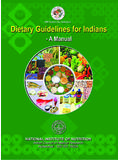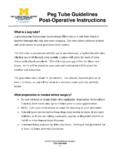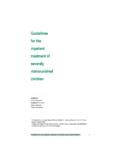Transcription of 4. POST-EXPOSURE PROPHYLAXIS FOR HIV
1 154. POST-EXPOSURE PROPHYLAXIS FOR New recommendations on POST-EXPOSURE PROPHYLAXIS for BackgroundARV drugs have been prescribed for POST-EXPOSURE PROPHYLAXIS following occupational exposure to HIV for health workers since the early 1990s. During the past two decades, the provision of HIV POST-EXPOSURE PROPHYLAXIS has been extended to non-occupational exposures, including unprotected sexual exposure , injecting drug use and exposure following sexual guidelines issued by WHO together with the International Labour Organization (ILO) in 2007 (1) were based on expert opinion and focused on HIV POST-EXPOSURE PROPHYLAXIS for adults following occupational exposure and sexual assault.
2 The guidelines recommended providing a two- or three-drug POST-EXPOSURE PROPHYLAXIS regimen following risk assessment of the exposure and the potential background drug resistance at the population level. ARV drug recommendations for POST-EXPOSURE PROPHYLAXIS followed WHO guidelines for ART at that time (2), giving preference to zidovudine (AZT) and lamivudine (3TC).Since 2007, recommendations on the use of key antiretroviral drugs for preventing and treating HIV have changed. Some of the drugs listed as alternative drugs for POST-EXPOSURE PROPHYLAXIS in 2007 (stavudine and saquinavir) are now no longer recommended for ART.
3 The latest WHO guidelines for ART, issued in 2013 (3), give preference to tenofovir disoproxil fumarate (TDF) and lamivudine (3TC) or emtricitabine (FTC) as a backbone for first-line treatment for adults and adolescents; harmonization of ART regimens for adults and children is recommended whenever guideline provides updated recommendations for POST-EXPOSURE PROPHYLAXIS regimens and prescribing practices. WHO aims to harmonize to the extent possible the ARV drug recommendations for POST-EXPOSURE PROPHYLAXIS with current recommendations for the treatment of HIV infection.
4 Recognizing the need to improve uptake and completion rates for POST-EXPOSURE PROPHYLAXIS , this guideline emphasizes simplification and does not differentiate between exposure sources but rather provides recommendations across all exposures. Recommendations for simplifying prescribing approaches and supporting adherence are also Rationale for HIV POST-EXPOSURE prophylaxisEvidence supporting the use of ARV drugs for POST-EXPOSURE PROPHYLAXIS comes from animal studies (4) and a single case-control study in health care workers (5) that demonstrated that ARV drugs could prevent the establishment of chronic HIV infection if administered within a short time following exposure .
5 Systematic reviews of the effectiveness of POST-EXPOSURE PROPHYLAXIS suggest that the use of ARV drugs following occupational and non-occupational exposure reduces the risk of acquiring HIV infection when administered as POST-EXPOSURE PROPHYLAXIS and is likely to be cost-effective in high-risk groups (6,7). The efficacy of ARV drugs in preventing HIV infection following exposure is further supported by the effectiveness of ARV drugs in preventing the mother-to-child transmission of HIV (8) and, more recently, pre- exposure PROPHYLAXIS (9).
6 As with any prevention intervention, effectiveness depends critically on high levels of adherence and completion of the prescribed course; however, reported completion rates are currently suboptimal for POST-EXPOSURE PROPHYLAXIS in most settings (10 ,11). Other factors that may influence POST-EXPOSURE PROPHYLAXIS effectiveness include the timing of initiation, level of exposure risk and possible drug resistance. Given these considerations, POST-EXPOSURE PROPHYLAXIS may never be considered 100% effective, and POST-EXPOSURE PROPHYLAXIS should form part of a wider strategy for avoiding acquiring HIV infection and other bloodborne viruses, including hepatitis B virus (HBV) and hepatitis C virus (HCV).
7 ObjectivesThis guideline provides evidence-informed recommendations on providing POST-EXPOSURE PROPHYLAXIS for all populations (adults, adolescents and children), for all potential types of exposure (occupational and non-occupational) in all recommendations include: preferred drug choices for adults and adolescents; preferred drug choices for children 10 years; and prescription methods and adherence addition, practical guidance is given on assessing eligibility for POST-EXPOSURE PROPHYLAXIS and providing follow-up testing and linkage to treatment and prevention scope of the guideline is limited to drug regimen and prescribing practices.
8 References to relevant guidelines from WHO and other sources are provided to support best practice section to the 2013 WHO consolidated guidelines on the use of antiretroviral drugs for treating and preventing HIV infection, Chapter 5 Clinical guidelines across the continuum of care: HIV diagnosis and ARV drugs for HIV Clinical management of HIV POST-EXPOSURE prophylaxisThe clinical management guidance outlined in this section is intended for all individuals exposed to a potential HIV source.
9 Subsection gives additional guidance for specific Standard of care for individuals exposed to HIVE veryone possibly exposed to HIV should be assessed by a trained health-care worker. Essential components of the clinical pathway include assessing the mechanism of exposure and assessing eligibility for POST-EXPOSURE PROPHYLAXIS , examination of any wound and initial first-aid treatment (Fig. ). Any prescription of POST-EXPOSURE PROPHYLAXIS should follow consent based on an understanding of the risks and benefits, including discussion of possible side effects and the importance of full adherence to POST-EXPOSURE testing for HIV and follow-up testing should form part of the clinical pathway but should not delay initiating POST-EXPOSURE PROPHYLAXIS where warranted.
10 Possible exposure to HIV can create significant anxiety for individuals, and counselling support may be required. The importance of primary prevention should also be emphasized as appropriate. In cases that do not require POST-EXPOSURE PROPHYLAXIS , the exposed person should be counselled about limiting future exposure risk, and HIV testing may be provided if and supportPrescriptionFollow-up Clinical assessment of exposure Eligibility assessment for HIV POST-EXPOSURE PROPHYLAXIS HIV testing of exposed people and source if possible Provision of first aid in case of broken skin or other wound Risk of HIV Risks and benefits of HIV POST-EXPOSURE PROPHYLAXIS Side effects Enhanced adherence counselling if POST-EXPOSURE PROPHYLAXIS to be prescribed Specific support in case of sexual assault POST-EXPOSURE
















